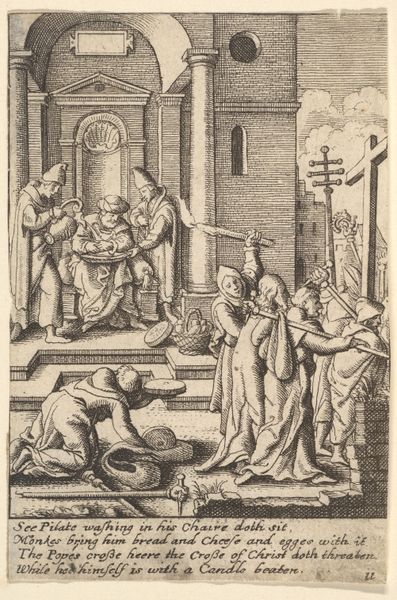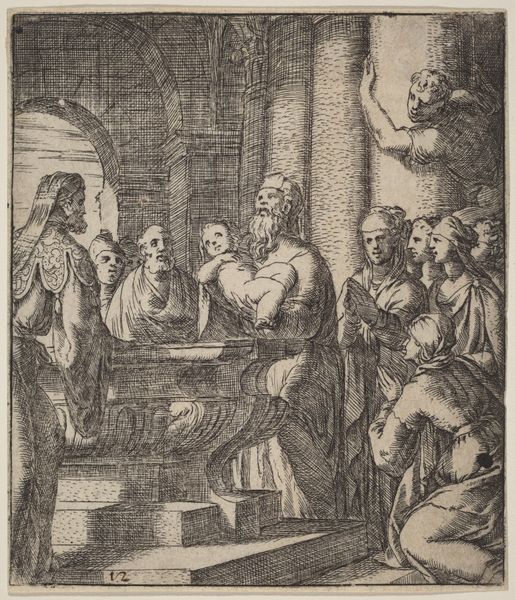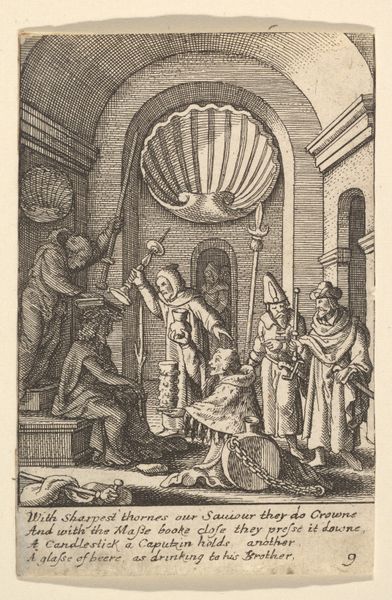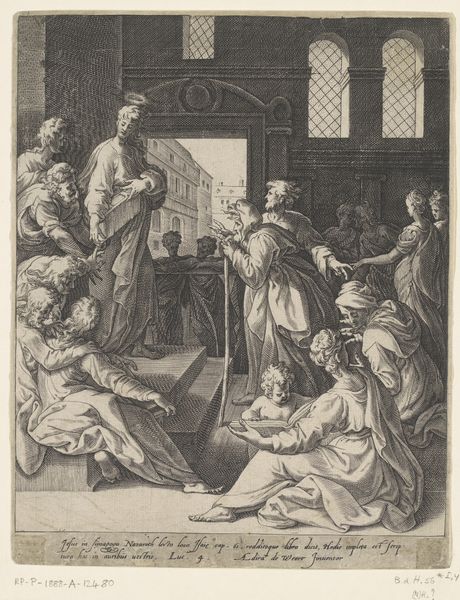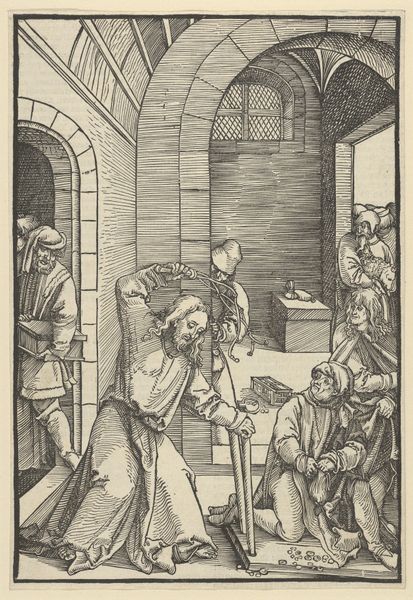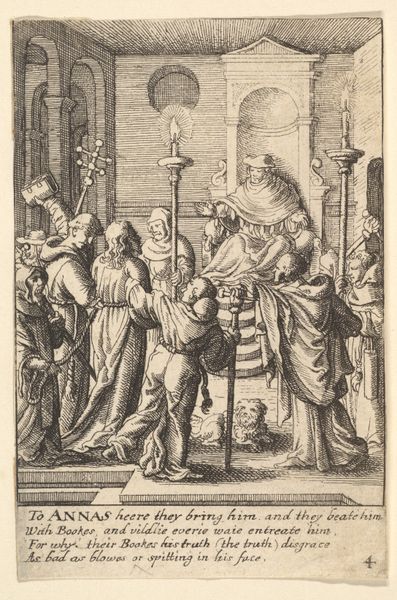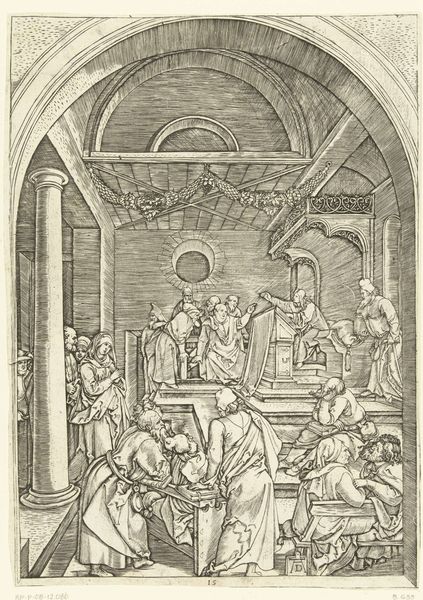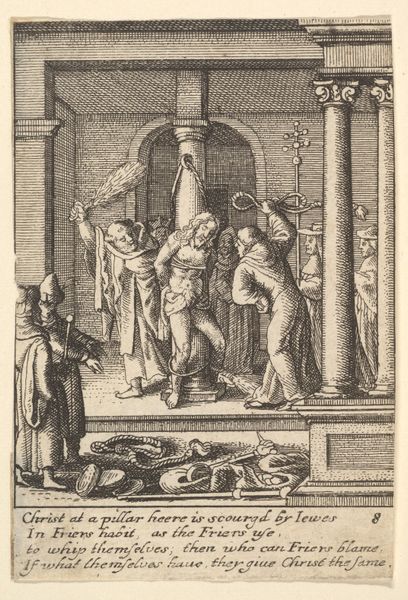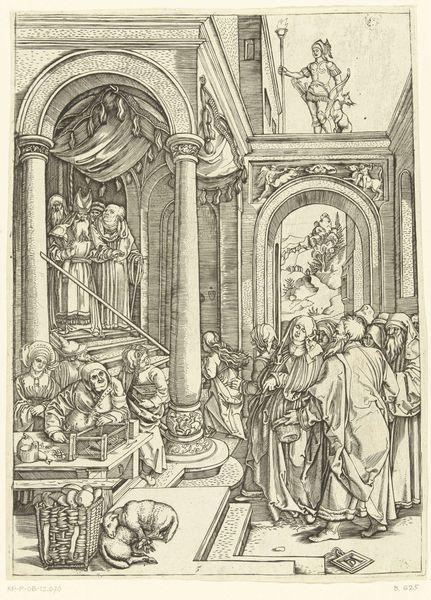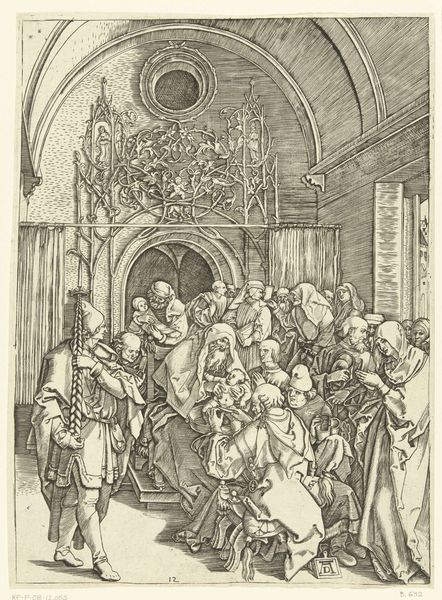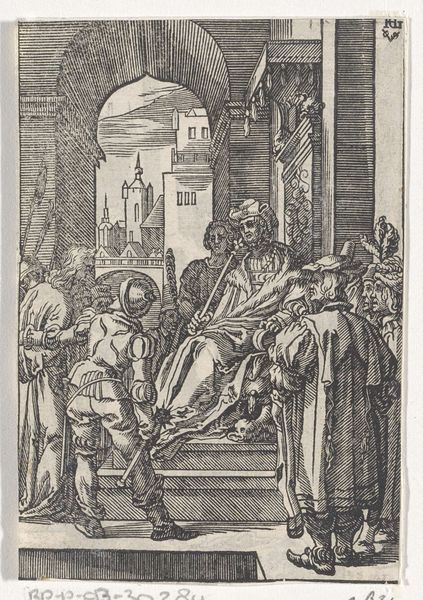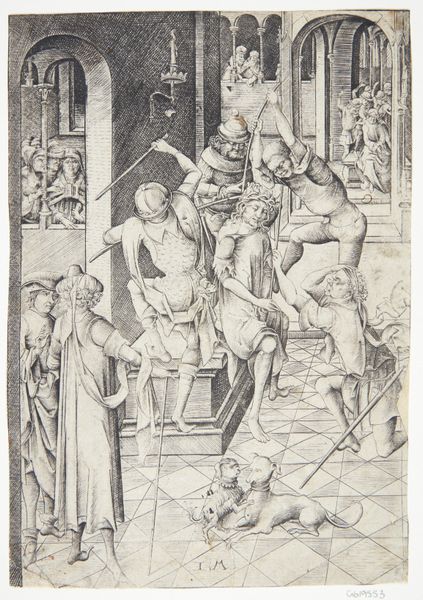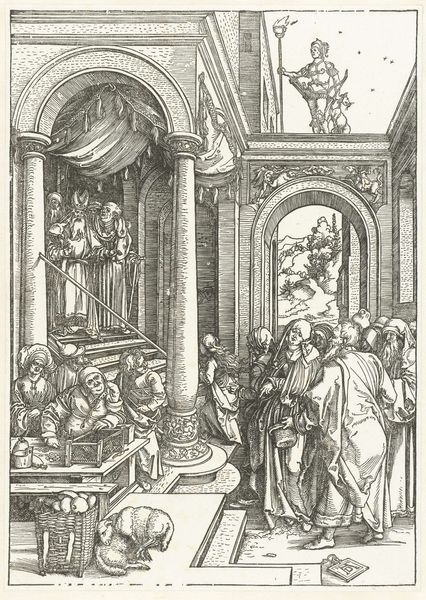
drawing, print, engraving
#
drawing
#
narrative-art
#
baroque
# print
#
figuration
#
line
#
history-painting
#
engraving
#
christ
Dimensions: Sheet: 3 7/16 × 2 3/8 in. (8.8 × 6 cm)
Copyright: Public Domain
Curator: This print, “Jesus again before Caiaphas,” was created by Wenceslaus Hollar between 1644 and 1652. It is currently located at the Metropolitan Museum of Art. Editor: It strikes me as quite theatrical, almost staged. The sharp lines create a very formal atmosphere, despite the rather cartoonish devil perched above Caiaphas. Curator: That dramatic effect certainly comes from the Baroque style, typical of that period. Consider the staging – the nuns peering from the window, the clearly delineated space, even the explanatory text below framing the scene. Hollar aimed to portray a specific reading of this event. Editor: The artist uses very economic lines to indicate character. There's a clear differentiation of space too. Note the relatively spare execution of the architectural space as compared to the clothing or even the figures. Curator: I find it quite a pointed commentary on religious and political power during the mid-17th century, specifically the portrayal of Caiaphas and the Roman Catholic Church. Hollar worked during a time of religious conflict and political upheaval. Prints such as this served as vehicles for expressing religious and social criticisms. Editor: Yes, I noticed the clear distinction between Caiaphas, elevated on the steps, and the chained figure of Jesus. The implied lines between the accusing figure on the lower left and Jesus contribute to a feeling of pressure that Caiaphas does not visibly experience. Curator: The inclusion of the devil atop Caiaphas’ throne—a direct critique of religious authority, right? It speaks volumes about how Hollar viewed the corruption within the church. The very idea of presenting this to a public audience shifts our perspective. Editor: What is interesting to me is the perspective on that throne; Hollar uses strict lines yet flattens the top area for what reason? Does it add some kind of symbolism about authority that seems all powerful, yet somehow false? Curator: Well, considering the societal and religious contexts of the time, perhaps this choice of perspective was designed to invite contemplation among contemporary viewers, encouraging a critical assessment of the period's power structures. Editor: It's fascinating how a simple engraving can carry so much weight. Curator: Absolutely, it reminds us how even seemingly straightforward depictions can serve as powerful historical documents, offering insights into the past's cultural and political debates.
Comments
No comments
Be the first to comment and join the conversation on the ultimate creative platform.
